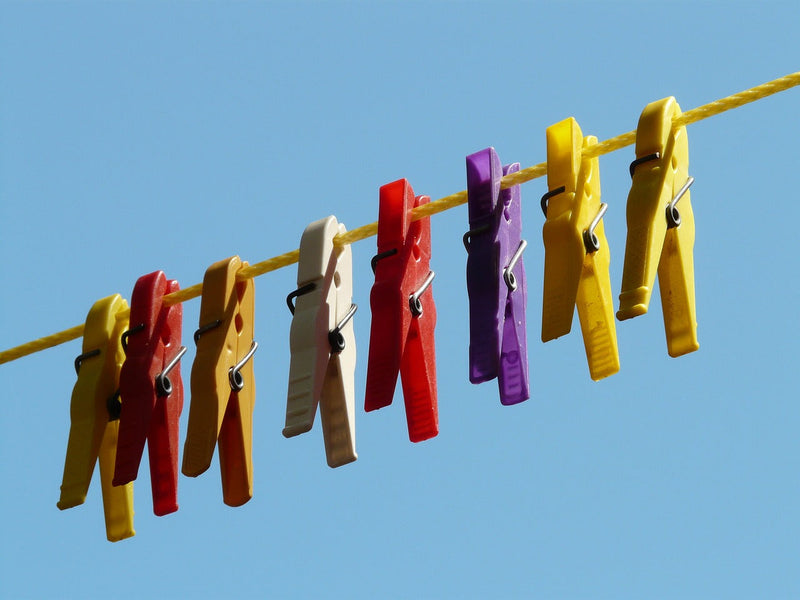
by Jayson Clean
Achieving KPI Targets for B2B Marketing of Eco-Friendly Laundry Detergent Sheets: An SEO Guide
In the rapidly evolving eco-friendly market, businesses targeting B2B audiences such as wholesalers and distributors have a unique opportunity to capitalize on the growing demand for sustainable products. Research indicates that the global eco-friendly laundry detergent market is projected to grow from USD 45.33 billion in 2024 to USD 66.43 billion by 2033, with laundry detergent sheets expected to reach USD 4.2 billion by 2032. This growth underscores the potential for business expansion and cost savings through sustainable offerings like eco-friendly laundry detergent sheets. This SEO-optimized guide outlines actionable strategies to achieve specific Key Performance Indicators (KPIs) for a B2B marketing campaign promoting these products. The targets include increasing website traffic from 10,000 to 15,000 per month, improving the conversion rate from 5% to 7%, and boosting customer retention from 80% to 85%. By leveraging content marketing, search engine optimization (SEO), and data-driven insights, this article provides a roadmap for enhancing online visibility, driving conversions, and fostering long-term customer loyalty in the competitive eco-friendly laundry detergent sheets market. Strategies for Increasing Website Traffic: Driving website traffic is the foundation of any successful SEO strategy. To increase traffic from 10,000 to 15,000 per month for your eco-friendly laundry detergent sheets campaign, consider the following approaches: Content Marketing: Develop high-quality content such as blogs, white papers, and case studies tailored to B2B audiences. For instance, articles exploring the benefits of eco-friendly laundry detergent sheets for wholesalers can attract organic visitors. Search Engine Optimization (SEO): Optimize your website with keywords like “eco-friendly laundry detergent sheets,” “sustainable laundry solutions,” and “B2B laundry product marketing.” Incorporate these keywords into page titles, meta descriptions, headers, and body content to improve search rankings Social Media Marketing: Leverage platforms like LinkedIn and Twitter to share content and engage with B2B professionals. Posting industry insights and eco-friendly product highlights can drive referral traffic. Email Marketing: Implement targeted email campaigns with personalized content to direct potential customers to your site. Highlighting bulk purchase benefits or new product features can increase click-through rates. Paid Advertising: Utilize Google Ads and LinkedIn Ads to target decision-makers in the B2B sector. Geo-targeted campaigns can enhance visibility and drive traffic efficiently. Trade Shows and Events: Participate in industry events like the Laundry Care Expo to generate interest and direct attendees to your website. This offline-online synergy can significantly boost traffic. Sustainable Marketing Practices: Use QR codes on marketing materials linking to sustainability-focused content, appealing to environmentally conscious B2B buyers. An unexpected trend influencing traffic is the travel industry’s demand for portable laundry solutions, with travel spending up 1.4% above May 2022 and air travel demand up 10% in May 2023, highlighting a niche market for eco-friendly sheets. Strategies for Improving Conversion Rates: Converting website visitors into leads or customers is critical for ROI. To enhance your conversion rate from 5% to 7%, implement the following SEO-friendly tactics: Website Optimization: Ensure your site features a clean design, fast loading times, and clear calls to action (CTAs) like “Request a Sample” or “Contact Us for Bulk Pricing.” This improves user experience and search engine rankings Lead Capture Forms: Integrate simple, strategically placed forms offering valuable resources like a free guide on eco-friendly laundr-y solutions. This captures leads without deterring visitors. A/B Testing: Experiment with different page layouts, CTAs, and content to identify what resonates with your audience. Use tools like Google Optimize to track performance and refine based on data. Personalization: Tailor landing pages and emails to address the specific needs of B2B decision-makers, such as cost savings or sustainability certifications. Personalized content boosts conversion rates. Mobile-Friendliness: Optimize your site for mobile users with responsive design, as mobile searches influence SEO rankings. A seamless mobile experience can convert on-the-go B2B buyers. Data and Analytics: Use Google Analytics to monitor bounce rates, page views, and user paths. Identify high-drop-off pages and optimize them to improve conversions. Strategies for Boosting Customer Retention: Retaining customers ensures long-term profitability. To increase customer retention from 80% to 85%, consider these strategies: Personalization: Offer tailored dashboards or product recommendations for wholesalers based on their purchase history. Personalization fosters loyalty. Excellent Customer Service: Provide prompt, knowledgeable support via chat, email, or phone to address concerns. High-quality service reduces churn. Loyalty Programs: Introduce programs offering discounts or exclusive access for repeat orders. This incentivizes continued business. Regular Communication: Send newsletters with product updates, industry news, and eco-friendly tips to keep your brand top-of-mind Customer Feedback: Actively solicit feedback through surveys and act on it to improve offerings. This builds trust and satisfaction. Data-Driven Insights: Use CRM analytics to identify at-risk customers and implement retention campaigns. Predictive models can prevent churn. Certifications and Verifications: Highlight certifications like Fair Trade or B Corp to reinforce your eco-friendly commitment, appealing to sustainability-focused clients. Conclusion Achieving the KPI targets of 15,000 monthly website visitors, a 7% conversion rate, and 85% customer retention requires a strategic, SEO-optimized approach. Start by enhancing website traffic with content marketing and SEO, focusing on keywords like “eco-friendly laundry detergent sheets” to boost organic reach. Improve conversion rates by optimizing your site and personalizing user experiences, ensuring mobile-friendliness to align with search engine preferences. Boost retention through personalized service, loyalty programs, and eco-friendly certifications, supported by data analytics. Take the next step by conducting an SEO audit of your current site, launching a content marketing campaign, and implementing a loyalty program. Contact our team today to explore tailored marketing support for your eco-friendly laundry detergent sheets and elevate your B2B strategy.




